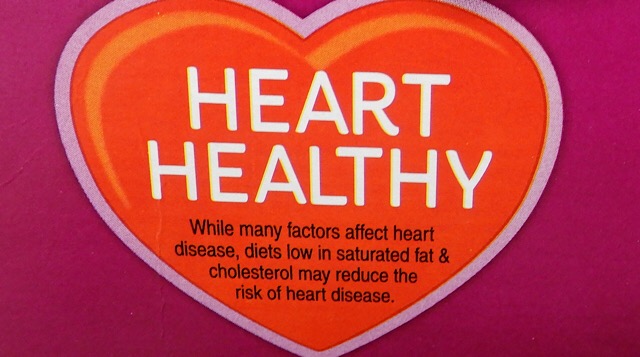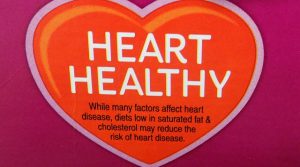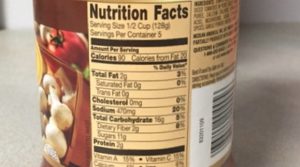
by Melanie Taylor | Mar 11, 2020
This month brings awareness and education about the importance of our kidneys in maintaining a healthy life. Kidney function is unique because you may not notice the symptoms until the function is already far gone. The CDC reports chronic kidney disease is a condition that 1 in every 7 adults (age 18 or older) in the United States has, as well as people with end stage renal disease who need dialysis or a kidney transplant.
How do your kidneys keep you healthy?
- Help remove excess fluid levels in the body.
- Make vitamins that control growth.
- Activate Vitamin D for healthy bones.
- Filter wastes from the blood.
- Control the production of red blood cells.
- Release hormones that help regulate blood pressure.
- Help regulate blood pressure, red blood cells, and the amount of certain nutrients in the body, such as calcium and potassium.
There are many complications associated with kidney disease. They include cardiovascular disease, nerve damage, heart attack, weak bones, high blood pressure, stroke, anemia/low red blood cell count and of course kidney failure.

Speak openly with your doctor about any concerns you may have regarding your health. (Photo source: Tyler Jones, UF/IFAS)
The main risk factors for kidney disease and the problems associated with it are high blood pressure, diabetes, family history, and being 60 years old and above. Out of these four problems, two of them – high blood pressure and diabetes – may be managed by maintaining a healthy lifestyle, taking medications as prescribed, regular visits to your doctor and exercise. If you have been diagnosed with either of these two, you need to regularly monitor your blood pressure and glucose levels, take medications if prescribed, and speak openly with your doctor about concerns or questions you may have. Family history and being over the age of 60 are not issues you can control, but you can strive to live a healthy lifestyle and regularly have blood work drawn so your doctor can help catch any issues that are becoming a problem. Learning to maintain and follow your doctor’s orders will go a long way to keeping you and your kidneys healthy longer.
What are the symptoms you may notice if you are experiencing kidney problems?
- Swelling in your face, hands, abdomen, ankles, and feet.
- Blood in your urine or foamy urine.
- Puffy eyes.
- Difficult, painful urination.
- Increased thirst.
- Fatigue.
If you notice any of these problems or are just concerned because of family history, your family doctor can order the blood work to check your kidney function. If you find out you are experiencing kidney problems you should see a nephrologist – a kidney specialist.
Although many people ignore the importance of their kidneys, they play a very important part in our daily bodily functions in regulating minerals, fluids, blood pressure, and so much more. Striving to maintain a healthy lifestyle will help to ensure your kidneys keep working hard for you. Be sure to show your kidneys some love this March to celebrate National Kidney Month.
Sources:
National Kidney Foundation – https://www.kidney.org/
Center for Disease and Prevention – https://www.cdc.gov/

by Angela Hinkle | Jan 24, 2020
My favorite time – snack time! For February, National Snack Food Month, let’s celebrate these tasty morsels for a whole month.
Go Beyond the Snack Aisle
Snacks often have a bad reputation, at least in terms of health. It’s true that snack food aisles are often filled with high fat, high calorie, high sodium, and high sugar choices. But snacks can be great sources of fiber, vitamins, minerals, proteins, and healthier fats and carbohydrates. You may just have to wander to other parts of the store next time you shop.
Think Mini Meal
When you snack, think of it as a mini meal. Though you could plan tomorrow’s dinner to be a plate of snack cakes with a side of potato chips, hopefully you come up with something more satisfying than that – both in taste and nutrition. Additionally, when we snack on healthier foods in between meals, it gives our bodies the sustainable energy it needs to make it to that next meal.

Snacks – Fun, Tasty, and Healthy
Photo Source: Angela Hinkle
Snack MyPlate
Try snacking from all five food groups this month.
- Whole grains – popcorn, granola, whole grain crackers
- Fruits – apples, bananas, oranges, raisins
- Veggies – pea pods, cucumber slices, carrots
- Dairy – string cheese, yogurt cups, individual shelf stable cartons of milk
- Protein – hard-boiled eggs, mixed nuts, healthy beef jerky
Make Homemade Mixed-Up Food Group Snacks
- Whole grain pita or multi-colored pepper slices dipped in guacamole or hummus
- Apple slices or carrots with peanut butter dip
- Cherry tomatoes with mozzarella and basil
- Fruit smoothies or protein shakes
- Yogurt with granola and mixed berries
- Banana Sushi – smear a whole wheat tortilla with peanut butter, put a banana in the middle, roll it up, then cut it into “sushi” slices
For more great snacking ideas, check out 10 Snack Tips for Parents, MyPlate Snack Tips for Kids, and 25 Healthy Snacks for Kids
Delicious, healthy, on-the-go snacks. Be creative and keep it healthy this February – National Snack Food month.

by Dorothy C. Lee | Jul 21, 2019
Eating healthy is not something that just happens by going on a particular diet. In fact, the best kind of diet is where the right choices are made, and it becomes a way of life. Sometimes we need to know some ways to change the bad habits we have developed. There is no ‘quick fix’.

Tune Up Your Lifestyle
Photo Source: UF/IFAS
With today’s fast-paced lifestyles sometimes we feel we don’t have the time to do the things we know we should. For instance, to get more exercise, do things like park a distance from the store when you go shopping, walk up and down the stairs instead of taking the elevator, walk to lunch, or even turn up the speed on regular activities you perform around the house.
When grocery shopping choose foods from the basic food groups (fruits, vegetables, whole grains, lean protein, and reduced-fat dairy products) to round out a healthy meal plan.
Convenience foods are a part of today’s lifestyle, but they often lack nutritional quality, texture, and flavor. Preparing foods at home can be healthy and economical. You can boost nutrition and flavor by adding fresh herbs, spices, and aromatic vegetables to the meal menu.
Foods and beverages high in sugar add empty calories to the diet and contribute no nutritional value. Read labels to determine the amount of added sugar in food products. Choose lower calorie beverages.
Experiment with new food items. Try adding different fruits, vegetables, or grains to your diet. For example, try tropical fruits such as mango, guava, papaya, or grains as quinoa, barley, or millet, to add vitamins, minerals and fiber to the diet.
Before you go out to eat, don’t starve yourself. Drink water before the meal to avoid overeating or eat a snack before dinner and you won’t be tempted to overeat.
When socializing don’t meet at eating places. When you do dine out, cut out fried main dishes or ones with heavy sauces and gravies. Eat smaller portions and don’t go back for seconds. Order low-fat foods when possible. However, keep in mind that you too need to allow for indulgence along the way.
Be active! Physical activity has health benefits. Being physically active not only burns calories, it aids in physical strength, and cardiovascular health. U.S. Dietary Guidelines recommend being physically active at least 150 minutes a week for adults. (https://health.gov/dietaryguidelines/).
Chances are, along with a healthy diet and regular physical activity, your tune up will result in living a healthy lifestyle.
https://www.freshfromflorida.com/Consumer-Resources/Buy-Fresh-From-Florida/Tropical-Fruit
https://www.tropicalfruitgrowers.com/
For further information, contact:
Dorothy C. Lee, C.F.C.S.
UF/IFAS Extension Escambia County
3740 Stefani Road
Cantonment, FL 32533-7792
(850) 475-5230
dclee@ufl.edu

by Kendra Hughson | Feb 28, 2019

Not all front of the box labels are approved and defined by the FDA. Learn what health claims are approved for use. Photo Source: Kendra Zamojski
For those of us who read food labels, grocery shopping can be a confusing maze of health claims enticing us to make what look like healthy choices. But, are these choices really healthy? When I noticed that my shampoo was gluten-free, I decided it was time to refresh my knowledge on food and product labels and figure out what is behind the label.
The Nutrition Labeling and Education Act of 1990, regulated by the Food and Drug Administration (FDA), requires the labeling of most food and sets consistent standards for certain nutritional content and health claims. Much of the consistent information we find on food products is the result of this regulation. Food products must contain the Nutrition Facts panel, use common household measurements for serving sizes, and clearly identify any food allergens. Ingredients must be listed in descending order by weight using common names and clearly identifying certified color additives such as “FD&C Red No. 40” or “Red 40.” Raw vegetables, fruits, and seafood are exempt from nutrition labeling requirements.
The FDA regulates the use of the word “healthy” on food products. To use this term, a food product must be low in fat and saturated fat, low in cholesterol, contain less than 480 mg of sodium, and contain at least 10% of the Daily Value per serving for vitamins A, C, calcium, iron, protein, or fiber. Exceptions include raw fruits and vegetables; or a single ingredient or mixture of frozen or canned fruits and vegetables; and enriched cereal-grain products. Seafood and meat products and main dishes or meals have slightly different regulations to meet the “healthy” criteria.
The United States Department of Agriculture (USDA) regulates and enforces the use of “certified organic”. To use the USDA certified organic seal, the final product must follow strict production and handling standards. Products with this seal have completed a certification process meeting standards in soil quality, animal raising practices, and pest and weed control, and certifying that they have not used synthetic fertilizers, sewage sludge, irradiation, or genetic engineering.
The USDA also regulates labels for meat and meat products. “Certified” means the USDA has officially evaluated a meat product for class, grade, or other quality characteristics (e.g., “Certified Angus Beef”). Products labelled “natural” must not contain artificial ingredients, added color, and must be minimally processed. The label must explain the use of the word “natural” such as “no artificial ingredients; minimally processed”. Meat and meat products claiming “no hormones added” cannot be used on the labels of pork or poultry unless it is followed by a statement that says “Federal regulations prohibit the use of hormones.” Beef products can make the claim if the producer has documentation showing no hormones have been used in raising the animals. Meat and poultry producers must also provide appropriate documentation that animals were raised without antibiotics to use the label “no antibiotics added”. The term “Chemical free” is not allowed on labels.
Not all front-of-the-box marketing terms and labels are defined by the FDA. When reading labels and deciphering health information, watch out for misleading terms and health claims that seem to good to be true. Learn what health claims are approved and which ones are not. Remember, packaging is designed to attract your attention and entice you to make a purchase. Read the Nutrition Facts panel and ingredients list to make the healthiest choice for you and your family.

Read the Nutrition Facts panel to make healthy food choices. Photo Source: Kendra Zamojski
Here are some other approved labels:
Juice: Juice must be 100% juice. If less than 100% juice, the product must use the terms cocktail, beverage or drink.
High or Excellent Source: Contains more than 20% of the Daily Value per serving.
Good Source: Contains 10-19% of the Daily Value per serving.
Lean: Seafood or meat contains less than 10 g total fat, 4.5 g or less saturated fat, and less than 95 mg cholesterol per serving.
Extra Lean: Seafood or meat products contain less than 5 g total fat, less than 2 g saturated fat and less than 95 mg cholesterol per serving.
Fiber Claims: If a product makes a fiber claim but the food is not low-fat, then the label must state the total fat per serving.
Antioxidant Claims: The nutrients must be included as part of the claim for example, high in antioxidant vitamins C & E.
Whole Grain and Heart Disease Claims: Food product contains 51% or more whole grain ingredients.
Gluten-free: This is a voluntary label for food products that are either naturally gluten free or gluten (e.g., wheat flour) has been removed to less than 20 ppm.
References:
A Food Labeling Guide: Guidance for Industry. 2013. Available at: https://www.fda.gov/downloads/food/guidance%20complianceregulatoryinformation/%20guidancedocuments/foodlabelingnutrition/foodlabelingguide/ucm265446.pdf
McEvoy, M. Understanding the USDA Organic Label. 2016. Available at: https://www.usda.gov/media/blog/2016/07/22/understanding-usda-organic-label
Questions and Answers: Gluten-Free Food Labeling Final Rule. Available at: https://www.fda.gov/Food/GuidanceRegulation/GuidanceDocumentsRegulatoryInformation/Allergens/ucm362880.htm
Meat and Poultry Labeling Terms. Available at: https://www.fsis.usda.gov/wps/portal/fsis/topics/food-safety-education/get-answers/food-safety-fact-sheets/food-labeling/meat-and-poultry-labeling-terms/meat-and-poultry-labeling-terms
Family and Consumer Sciences Agent III
Interim -Northwest District
155 Research Road, Quincy, FL
Office: 850-875-7135
Email: hughson@ufl.edu

by Amy Mullins, PhD, RDN | Feb 11, 2019

Make SMART changes for your health. Photo credit: UF/IFAS Northwest District
“New Year, New Me!” – the same phrase we hear and see posted all over social media every time the new year rolls around. More often than not, resolutions tied to each new year involve diet and weight changes. But how does one actually commit to these new resolutions year round?
Step 1: Forget Fads and “Dieting”
The world of nutrition can seem overwhelming with the various diets that are continuously marketed as “the next best thing for your health.” However, most diets, such as Paleo, Vegan/Vegetarianism, Keto, etc., exclude one or more food groups from the diet, which only makes things more challenging. In reality, eating healthy does not need to be that difficult. According to the 2015-2020 Dietary Guidelines for Americans, a healthy eating pattern “accounts for ALL foods and beverages within an appropriate calorie level.” Essentially, moderation is key!
In addition to fads, scratch the word “diet” from your vocabulary. Dieting implies something short term or there is an end date in mind. To build healthy, sustainable eating patterns, we want to make lifestyle changes. A healthy lifestyle not only incorporates what you eat, but includes exercise and a healthy mind as well! Use SMART goals to help attain your healthy eating/lifestyle changes for 2019: SMART stands for Specific, Measurable, Achievable, Relevant, & Time-bound.
Step 2: Focus on Food Groups
Instead of counting calories in 2019, let us count food groups! How many food groups does your meal have? Is there a protein? Vegetables? Healthy fats? Foods are generally classified into three main groups, or macronutrients. By definition, macronutrients are types of food required in large amounts in the diet. Such foods are proteins, carbohydrates, and fats.
Proteins include all types of meats such as chicken, turkey, fish, and beef. Other foods high in protein include eggs, dairy products, legumes (peas and beans), various nuts, and soy products. Proteins are the basic building blocks of your bones, muscles, skin, and blood. Your body uses proteins to build and repair your tissues and it is an essential nutrient for the human body. Strive to include a rich source of protein at every main meal! How much protein do you need? Aim to include 20-30 grams, or 4-6 ounces, at every main meal. That is the equivalent of a chicken breast that is about the size of a deck of cards or the palm of your hand.
Carbohydrates include simple sugars, all types of grains, fruits, and vegetables. Carbohydrates are the body’s main source of and preferred fuel for daily activities. It may be somewhat confusing as to what are appropriate carbohydrates to add in your diet. To simplify things, aim to include at least two different carbohydrates in your meal. Perhaps that includes a grain (aim to make half of all your grains whole grains) plus a variety of vegetables. If you really want to add a cookie to your lunch, then make sure to include some fruit or vegetables as well!
Fats are a food group that often carry a negative reputation. However, fat plays an essential role as an ingredient in hormone production, in helping to protect our organs, absorption of vitamins and nutrients, as well as providing a good amount of energy! Fats are subdivided into four groups: Monounsaturated, polyunsaturated, saturated, and trans fats. The word unsaturated indicates that these types of fats are liquid at room temperature and make up much of our healthy fats we want to include in our diet. Such fats are those found in olive oils, avocados, nuts, and seed oils and reduce the risk of cardiovascular disease. Saturated fats are solid at room temperature, and include butter, cheese, and fatty streaks you find in meats. Trans fats are a manufactured form of fat in which food manufacturers add hydrogen to liquid fats in order to make them more solid. Trans fats have been known to increase LDLs or bad cholesterol, decrease good cholesterol or HDLs, and are linked to an increased risk for cardiovascular disease and type 2 diabetes. According to the American Heart Association and 2015-2020 Dietary Guidelines for Americans, we want to limit trans and saturated fats in our diets and focus on including more oils, nuts, and fish.
Step 3: Make Small, Adaptable Changes
If you are used to consuming large amounts of processed foods and sugary beverages, the thought of completely giving up those things can be very daunting. Implementing new strategies to eat healthier begins with small and adaptable changes. Slow incorporation of more lean meats and fresh fruits and vegetables can help make the transition far less challenging.
For example, most often, macaroni and cheese is made with white pasta and high fat cheese. To modify this meal and make it healthier, try substituting whole grain pasta for regular pasta. Next, experiment by adding some of your favorite vegetables and a lean protein such as chicken or tuna. Look for 2% or low fat cheese in the grocery store to replace the regular high fat version. These simple changes will allow you to still enjoy your favorite meal, reduce the sodium and fat content, and increase your consumption of vegetables and proteins!
Small subtle changes are key to creating long-term healthy habits. The transition to building healthier eating patterns will be much easier if you shift the focus to include more of what our bodies need and less on “dieting.” If you find yourself struggling to make healthier meals, https://www.choosemyplate.gov/MyPlate is a great resource to educate yourself on how to build and maintain a healthy diet!











